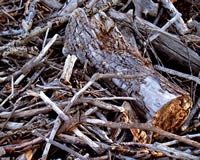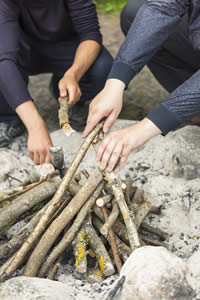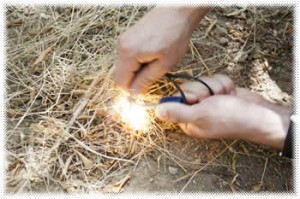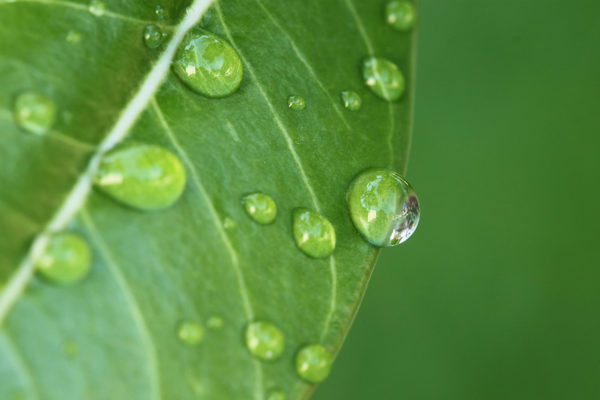Fire building is integral to any survival situation. We need fire for warmth, cooking, food preservation, and water purification, among other uses.
Survival dictates that we understand how to build a fire with whatever materials are available.
Locating Your Ideal Fire Building Spot
Although the mechanics of fire building are extremely important, a lot of people do not give any thought to where they should actually build their fire in the first place. Before we examine the materials we can use to build a fire, let’s review some of the things to look for before gathering materials.
Your fire should be in a dry spot that is protected from the wind. Not only can wind make fire building more difficult, it can also spread the fire uncontrollably.
Make sure your fire is near the shelter. It does little good to have a fire far away from where you are bedding down at night, unless you’re using the fire to smoke meat and there is a risk of attracting bears or other predators.
“Position your fire in such a way that heat moves in the optimal direction. In the right location, the heat from your fire will radiate toward your shelter and keep you warm in the evening.”

This can also be accomplished using a reflector or by positioning your fire against a rock wall as the heat will radiate off the wall in your direction.
Hopefully there is ample fuel available in your location. Although this is not always possible, you want to avoid traveling unnecessarily in search of more fuel.
If you’re building a fire in the snow, place a solid layer of green logs on the snow and use this as a platform to build your fire. The moisture from melting snow can quickly extinguish your fire while you are trying to get it started.
Types of Wood Used in Fire Building

Fire building requires three materials: Tinder, kindling, and fuel.
Tinder is dry material that ignites with little heat. Whatever you use for tinder must be completely dry so that even a small spark is capable of igniting.
Good materials to use for tinder include fine wood shavings, birch bark, dead pine needles, and even the lint from your pockets.
Kindling is flammable material that you add to the burning tinder. Kindling also needs to be completely dry so that it catches fire quickly and does not extinguish the tinder. Kindling helps increase the fire’s temperature so that it can ignite the less combustible materials we typically use for fuel.
Small twigs found on the ground, small strips of wood, and cardboard are all excellent sources of kindling. One thing you should consider adding to your bug out bag is cotton balls that have been soaked in petroleum jelly. These can be stored in a Ziploc bag and make excellent kindling, even in damp conditions.
Fuel is less combustible so it burns slowly and steadily once it has ignited. Dry standing wood and large branches work well for fuel. Green wood that is finely split also works well and is the recommended fuel source if you are creating a smoker for meat preservation. Even dry grass twisted into bunches, dried animal feces, and animal fat work well as fuel for your fire.
Building the Fire Structure

Once you have collected all your materials, the next step is to arrange the wood and actually start the fire. There are many different methods of arranging the wood for your fire effectively. We are going to look at three of the most common.
A tepee fire is made by arranging the tinder and a few sticks of kindling into the shape of a tepee or cone. Larger logs (fuel) are stacked around the outside of this tepee shape. As the tepee burns, the outside logs fall inward and feed the fire.
This design works well when you have wet wood because the outer layers will dry as the center burns.
A pyramid fire is created by placing two medium-sized logs parallel on the ground and building up three or four more layers of logs or branches on top. Each layer should be perpendicular to the layer before. After creating a small starter fire on the top, this fire will burn downward and can be left unattended during the night.
A Dakota fire hole or underground fireplace is a way to conceal your fire and protect it from harsh winds while serving as an excellent way to cook food.

To create a Dakota fire hole, dig a hole in the ground and dig another connecting hole for ventilation on the upwind side of the first hole. Place your fuel in the first hole and start the fire using tinder and kindling.
Although it can be a little bit more difficult to get this type of fire started, it will burn reliably once it gets going. If you place a flat rock over the hole above the fire, you have an excellent cooking surface as well.
Getting the First Spark

Matches and lighters are the easiest way to get a fire going, but they are also the most unreliable way. Just a small amount of water can render these fire starting tools completely useless.
If you haven’t done so already, buy a magnesium fire starter. As a matter of fact, buy a few of them because they are relatively inexpensive.
The hot sparks produced by magnesium fire starters can ignite tinder even in damp conditions and are much more reliable than matches and lighters.
Alternate Fire Starters
A convex lens like the ones found in binoculars, cameras, and magnifying glasses also works well assuming the sun is bright and high in the sky.
If none of those tools are available, you can always create a fire plow or bow and drill using wood you find in the forest. These methods are more difficult and can be nearly impossible to do successfully in adverse weather conditions.
In other words, keep magnesium fire starters handy!
Remember that humans set themselves apart from the animal kingdom with fire and it has been an integral part of society’s development ever since. In a survival situation, few things are going to be more important than the ability to build a fire successfully.
Tutorial Sections

Read More

Read More

Read More

Read More

Read More

